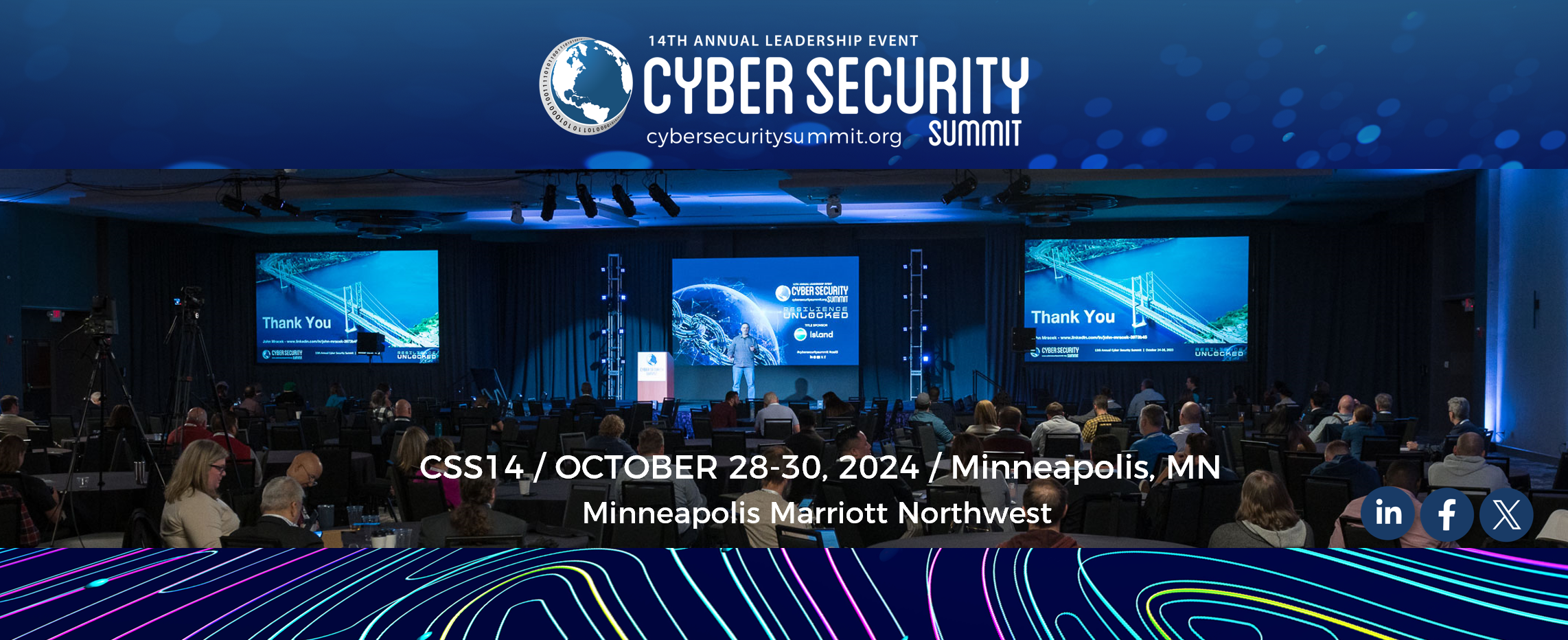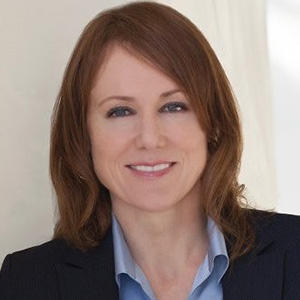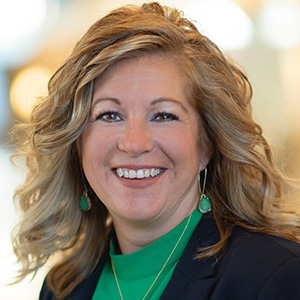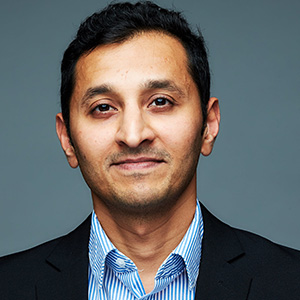Public Sector Workshop
 8:00 AM – 8:15 AM
8:00 AM – 8:15 AMWelcome Kickoff
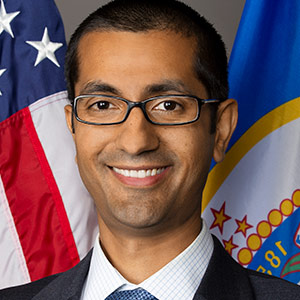
Rohit Tandon
Assistant Commissioner, State Chief Information Security Officer, State of Minnesota, MNIT Services
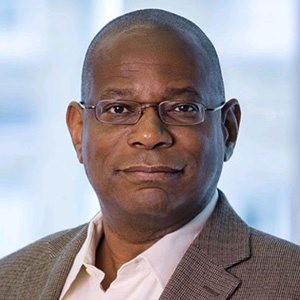
Carlos Kizzee
Vice President, Stakeholder Engagement, MS-ISAC, Center for Internet Security
Rohit Tandon, CISO, Minnesota and Carlos Kizzee, MS-ISAC Stakeholder Engagement will introduce the Public Sector Summit; outlining key challenges, requirements, capabilities, and solutions being implemented to address and mitigate the cyber security concerns for this unique sector.
 8:15 AM – 8:45 AM
8:15 AM – 8:45 AMPublic Sector Cybersecurity: The State of the States, Local Governments, Tribes, and Territories
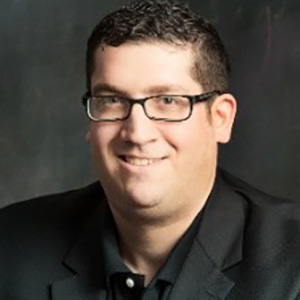
Eugene Kipniss
MS-ISAC Member Programs Manager, Center for Internet Security
Eugene Kipniss, MS-ISAC Federal Engagement and SLTT Assessments will keynote the Public Sector Summit with critical observations from this year’s Nationwide Cybersecurity Review (NCSR); an anonymous cybersecurity maturity self-assessment completed by thousands of SLTT governments and presented to Congress bi-annually. His presentation will include a brief on the threats and trends currently observed by the MS-ISAC and impacting SLTT governments; providing a summary threat landscape of the community. He will explore what the NCSR data can tell us about our risk reduction priorities in light of increasing threats to SLTT, and help the audience consider how we can best leverage the NCSR to communicate those priorities to our law makers.
 8:45 AM – 9:15 AM
8:45 AM – 9:15 AMWhy Your Organization’s Endpoint Data Is Your Greatest Source of Risk
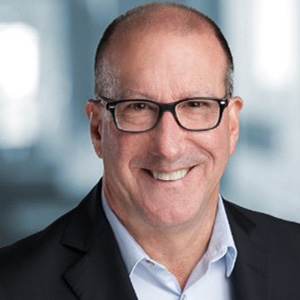
Gary Buonacorsi
Chief Technology Officer, Chief IT Architect US State and Local Government and Education, Tanium
Government agencies and Educational institutions are challenged to secure and manage a new kind of hybrid network. Not on-prem and cloud, but work in the office, work from home, work from anywhere. Your organization is more dispersed than ever — leaving you with an incomplete picture of your cyber and data risk. Start by focusing on one of the greatest challenges you face: endpoint devices. Endpoints have expanded beyond your organization’s perimeter and are operating in the badlands of the outside world. This makes them and the data that is on them ideal targets for cyber attackers. Traditional risk scoring systems do not factor endpoint data and may create a false sense of security. Your organization needs visibility to help break down the data silos and close the accountability, control and resiliency gaps to improve your cyber risk. This webinar will discuss why it is critical to move beyond basic vulnerability and threat data and calculate a dynamic risk score using key metrics across operational, security and regulatory domains.
 9:15 AM – 9:45 AM
9:15 AM – 9:45 AMCritical Success Factors in Cybersecurity

Michael Gregg
Interim CISO, North Dakota
Irrespective of whether the organization is public or private sector, any information security management program relies on several requirements and expectations at the organizational level to be successful. The degree of success is dependent upon the extent that these success factors are supported by the organization. This presentation will discuss the nature of these success factors.
 10:00 AM -10:30 AM
10:00 AM -10:30 AMHow to collaborate Cyber Intelligence and Sharing Cyber Resources
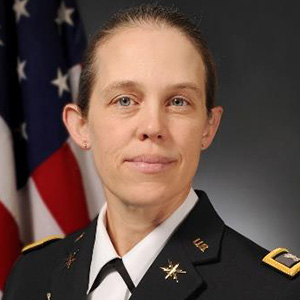
Col. Teri Williams
Commander, 91st Cyber Brigade, Virginia Army National Guard; DHS
How someone working at a city and county level can better collaborate across the State and Nation.
 10:30 AM – 11:00 AM
10:30 AM – 11:00 AMGrant Funding to Protect Technology From Cyber Threats
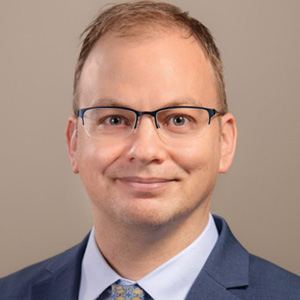
Stephen Ellis
Government Solutions Lead , Zoom Video Communications

Rohit Tandon
Assistant Commissioner, State Chief Information Security Officer, State of Minnesota, MNIT Services
Integrating cyber practices for both givers and receivers of funding. Funding is generally associated with services for residents of your community. Technology plays a critical role in delivering critical services and protecting that technology from cyber threats also requires investment. What are some of the approaches to seek out investment opportunities that defend the technology and protect recipients data around social services.
 11:00 AM – 11:30 AM
11:00 AM – 11:30 AMCybersecurity: Finding Common Ground in the Political Landscape
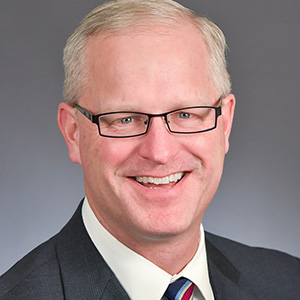
Jim Nash
Assistant Minority Leader, Minnesota House of Representatives
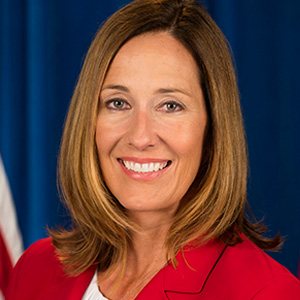
Jacqui Irwin
Assembly member, 44th District; Chair, Select Committee on Cybersecurity , California State Assembly
Cyber Zeros and Ones should not be red or blue. Explaining to your legislatures how technology has a corner stone impact to all citizens. Consumers have a choice to interact with private sector and provide personal data, however in the public sector the data collected is not optional for residents. This should place a higher burden on public sector to protect the sensitive data. There are also public disclosure expectations. (In the event of a data breach – how does the state rebuild confidence). Purpose – describe the why, and suggest how
 12:30 PM – 1:00 PM
12:30 PM – 1:00 PMSmart Cities / Safe Cities
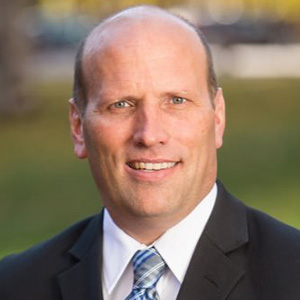
Jerry Driessen
Assistant Chief Information Officer / Chief Technology Officer , City of San José
Protecting citizens, service programs, infrastructure. How can we prepare for the smart cities that both public and private entities are responsible for defending? What are some strategies to ensure there is a good foundation to build on to protect privacy and defend the way of life.
 1:00 PM -1:30 PM
1:00 PM -1:30 PMFind. Build. Keep. Opening a Cyber Shop in the Public Sector

Gretchen White
CISO, Minnesota Judicial Branch
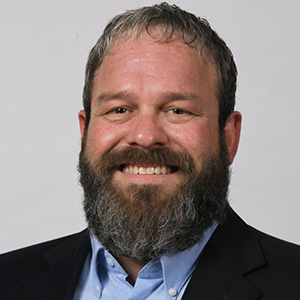
Andy Hanks
CISO, State of Montana
How can the public sector find, attract, develop, and retain cyber talent in this competitive market? This session will cover how the Minnesota Judicial Branch and Montana have built their cyber security programs from the ground up, incorporating novel approaches to find talent and cost-effective ways to develop skills, while retaining employees by providing meaningful work in a diverse culture.
 1:30 PM – 2:00 PM
1:30 PM – 2:00 PMPublic Sector Cyber Insurance
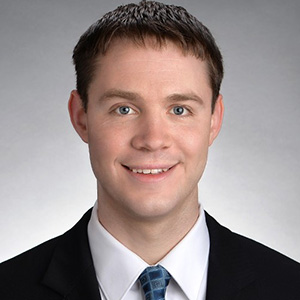
Ryan Spelman
VP Cyber Risk, Kroll
Presentation on cyber risk insurance in general and how public sector entities are approaching this issue. Attendees will learn the different approaches public entities can consider for insurance and how some select states and groups work together to share the cost and reduce the risk of cyber incidents.
 2:00 PM – 2:30 PM
2:00 PM – 2:30 PMAvoid a Cyber Splash
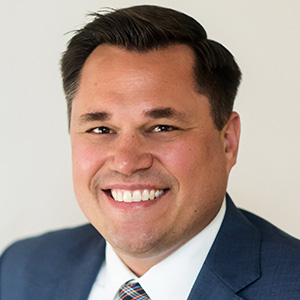
Darrell Kesti
Director, HealthCare Sales, Ordr
In this session we will learn about real life examples of attacks to our utilities and SCADA systems. We hope to offer real steps on what the future holds for this important sector and what our public officials are doing to meet this real and rapidly evolving threat to our citizens.
 2:30 PM – 3:00 PM
2:30 PM – 3:00 PMA Better Playbook for the Public Security Cyber Team: Introduction to Programmatic Distributed Empowerment for Information Security (“PDEIS™)

Evan Francen
CEO, SecurityStudio
The work of the public sector is always about people – people delivering services to people. And the same is true for cyber security. Our industry tends to focus on technology and threats, but people are the key to making defenses work, or not work. And whether people or technology, this is inherently a distributed problem. Like in a team sport, we need to coordinate the improvement of each person in a way that is focused on, and contributes to, a single goal. Traditional approaches to security leave the CISO playing a game he/she can’t win while those around them do their best individually, but are not organized or directed to the enterprise goal. We need to empower people and the enterprise in a way that is clear, specific, trainable, measurable, and manageable. Programmatic Distributed Empowerment for Information Security (or PDEIS™) is the method to change the game and put us all in a better position to win.
 3:00 PM – 3:30 PM
3:00 PM – 3:30 PMRecommendations and Best Practices for Whole of State Governance to Mitigate Cyber Risk
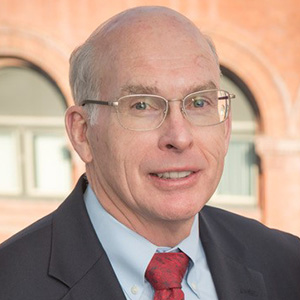
John Gilligan
President and Chief Executive Officer, Center for Internet Security
State government leaders must manage risk within a context where authority is distributed across sectors and levels and branches of government. Regardless of the structures and local culture that a governor and state legislature must operate within, they must establish cybersecurity governance that provides the mix of control and influence necessary and appropriate for their state, and that includes mechanisms for mitigating and responding to risk.
 3:30 PM – 4:00 PM
3:30 PM – 4:00 PMIT Operations: Your Cybersecurity Foundation
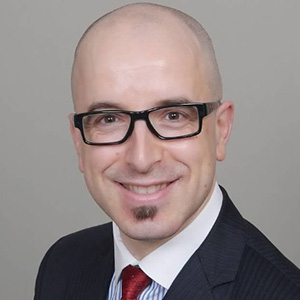
Andrew Coyne
CISO, Mayo Clinic
Public sector and healthcare sector organizations have been repeatedly targeted by nation-state and ransomware threat actors. Good tools are important, but the best protection against these attacks isn’t extra security products, but a focus on excellence in IT hygiene and IT operations.
 4:00 PM – 4:30 PM
4:00 PM – 4:30 PMTransforming Education and Cyber Operations
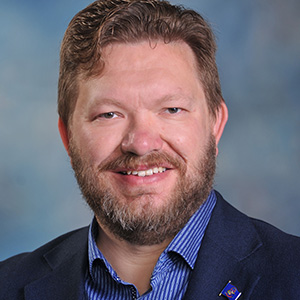
Shawn Riley
CIO , North Dakota Information Technology Department
As a national leader in energy and agriculture with a significant military footprint, North Dakota’s cybersecurity strategy involves a whole-of-government approach – including training the next generation of cybersecurity professionals. The state’s “PK-20W” Initiative aims to make “every student, computer science and cybersecurity educated, Kindergarten through PHD.” Shawn will talk through a model that can be applied to any state to bring their students to 21st Century Skills while also protecting the economy of the state, data of citizens, and security of all residents.
Technical Sessions
 8:45 AM – 9:15 AM
8:45 AM – 9:15 AMWomen in Cyber – Networking
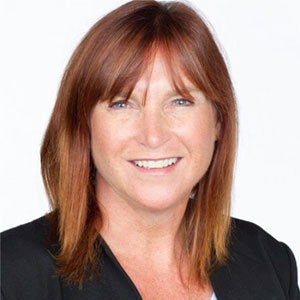
Judy Hatchett
CISO, Surescripts
Learn about WiCyS and how to get involved
 9:00 AM – 9:20 AM
9:00 AM – 9:20 AMWomen in Cyber – Namaste! Meditation and Mindfulness Session

Clark Whiting
Lead Security Architect, Best Buy
Clark Whiting, CISSP is a highly experienced and renowned information security architect with deep experience over several years across many industries. Besides his important cybersecurity work for Best Buy, Clark is also a board-certified meditation and mindfulness instructor. To mix it up this year, Clark will host a meditation and mindfulness session designed to teach beginners (and experts) about meditation and mindfulness best practices. We will even meditate as a group through Clark’s expert guidance. Namaste!
 9:30 AM – 10:20 AM
9:30 AM – 10:20 AMWomen in Cyber – Mentorships, The Circle of Life
Moderator:

Tina Meeker
Sr. Director, Information Security, Sleep Number
Panelists:
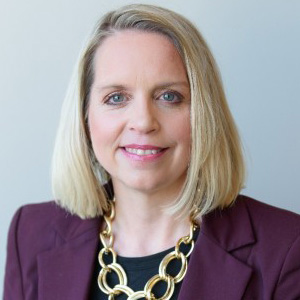
Milinda Rambel Stone
CISO, Bremer Bank

Amy Fox
VP of Business Development, Ambient Consulting

Carey Lewis
SVP of Strategic Sales, Island
Mentorships are the circle of life throughout a cybersecurity or business career, and it is even more critical in providing support and unlocking career opportunities to advancing our profession to be the best it can be. Join this panel of impressive information security and business executive as they share stories and strategies to how mentorship helped boost their growth both as mentors and mentees.
 9:30 AM – 10:20 AM
9:30 AM – 10:20 AMConsider a Career in Cyber
Moderator:

Judy Hatchett
CISO, Surescripts
Panelists:

Jennifer Czaplewski
Senior Director, Cyber Security, Target
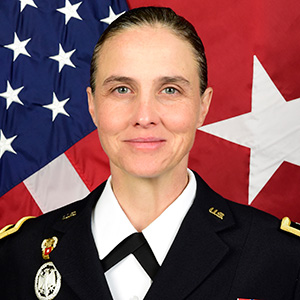
Stefanie Horvath
Mobilization Assistant to the Director of Operations; Executive Director Enterprise Services, U.S. Cyber Command, MNIT
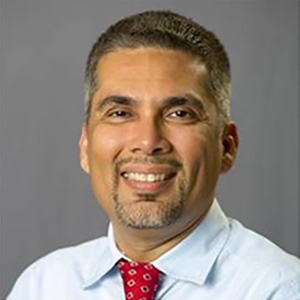
Faisal Kaleem
Professor, Department of Computer Science and Cybersecurity Graduate Director, Cyber Operations Program Executive Director, MN Cyber Co-Founder and Executive Board Member, Minnesota Cyber Careers Consortium (MNC3), Metropolitan State (MN) University

Jim Nash
Assistant Minority Leader, Minnesota House of Representatives
The session will showcase leaders in cyber security to discuss the career opportunities, salary ranges, and broad range of industries in which you can be employed, how a non-traditional tech background can be valuable and the growth opportunity for women in this traditionally male dominated field.
 9:30 AM – 10:20 AM
9:30 AM – 10:20 AMTaking a People-Centric Approach to Securing the Remote Workforce

Brian Reed
Director, Cybersecurity Strategy, Proofpoint
Today’s threat landscape is constantly evolving, and securing your remote workforce is critical to success. Understanding people risk and protecting your most important asset—your people— with a people-centric approach to security, should be the fundamental focus of your cybersecurity program.
 10:30 AM – 11:20 AM
10:30 AM – 11:20 AMDid You Just Click That!?

Michael Wyatt
Director, Threat Management , Surescripts LLC
We are all trained in our jobs and personal lives to be weary of suspicious emails and never click links or open attachments in them. But what happens when you do? We will look at phishing emails we have received and actually click links and/or open attachments to see what they try to do to our systems and accounts. Afterwards we’ll try and answer any security questions around phishing campaigns and or phishing in general.
 10:30 AM – 11:20 AM
10:30 AM – 11:20 AMWomen in Cyber – Building & Leading Diverse Teams is an Artform

Tina Meeker
Sr. Director, Information Security, Sleep Number

Keely Ross
Enterprise Sales Executive, Zoom Video Communications
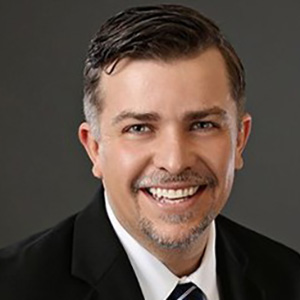
William Scandrett
Chief Information Security Officer , Allina Health
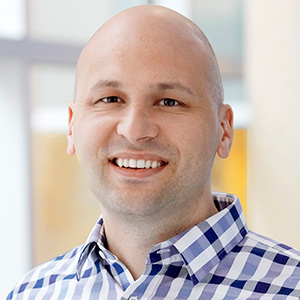
Adam Mishler
VP, Global Chief Information Security Officer, Best Buy
Building & Leading Diverse teams is an artform. Success means making a clear and visible commitment through recruiting, leading, and guiding team members through change and evolution while positioning your organization to pivot quickly to changing demographics, team member needs and market trends. Learn strategies and practices from this panel of proven architects of diverse teams
 10:30 am – 11:20 am
10:30 am – 11:20 amCloud Email and Collaboration Vulnerabilities

Michael Hansen
Sr Solutions Engineer, Avanan
Cloud Email and Collaboration tool has quickly become the go-to applications for remote work, accelerating dramatically in usage over the last year. Millions of users turned to Cloud Email and Collaboration Tools to help keep businesses going since the start of the pandemic —and hackers have noticed. As these tools are still relatively new, much is unknown about how it operates and how hackers will approach it. While the increased usage has been well-documented, what’s not been documented is whether the app is vulnerable to hacking. We will talk about discoveries that have already been made, potential risks that we see in the future, and how to best secure this relatively new communication vector. This session will walk attendees through:
The many inherent vulnerabilities in the platforms
The popular attack types
How hackers act differently within Teams than they do on email
 11:30 AM – 12:30 PM
11:30 AM – 12:30 PMWomen in Cyber – Luncheon Keynote (separate ticketed item)
As a technology executive, Louise McEvoy likes taking risks outside of work – mountainbiking on weekends and climbing the world’s highest mountains on vacations. Louise’s personal life goal was to climb Everest and she realized that goal when she summited on May 16, 2018. Louise is dedicated to helping others reach their “summit” and has spoken to many groups and organizations on that topic, knowing that sometimes the hardest things in life are also the most fulfilling.
 12:30 PM – 1:20 PM
12:30 PM – 1:20 PMThe Significance of AI & ML in Cybersecurity

Tom Cameron
Solutions Architect, BlackBerry powered by Cylance AI
Artificial intelligence (AI) has become a security industry buzzword so broadly applied as to become almost meaningless. When every product boasts AI capabilities, security decision makers may quickly become cynical, even in the face of the most exciting innovation shaping cybersecurity today. What is the benefit of a cybersecurity solution powered by Artificial Intelligence and Machine Learning? Why does the number of generations of AI matter? How smart is the AI machine? How does AI provide a predictive advantage to prevent breaches for my organization? How can a ‘Prevention First’ cybersecurity approach help my business?
 12:30 PM – 1:20 PM
12:30 PM – 1:20 PMA walk on the darkside – exposing the ransomware actors

Dave Gold
VP, Business Strategy, SentinelOne
Over the past few years, Ransomware attacks have evolved from an economic nuisance to a full-blown threat to public health, safety, and even national security. Ransomware has taken over as the malware of choice for financially motivated attacks. Ransomware groups have become professional enterprises with very profitable businesses and brands built around encrypting and holding your data hostage. While ransomware attacks are not new, many organizations are not properly prepared to handle a ransomware attack. This talk will dig into the history of ransomware, the groups and methods being used to target you, and a discussion on how to better prepare your organization to stop ransomware attacks.
 12:30 PM – 1:20 PM
12:30 PM – 1:20 PMInsights from Target’s Enterprise Journey to adopt FIDO

Tom Sheffield
Senior Director Technology, Target
Join us to hear Target’s journey to adopt FIDO as a primary authentication capability across the Enterprise. We will share stories of some of the challenges and obstacles we had to overcome along the way. Our goal was not to drive users to our help desk so clarity of messages was key requirement in our program so we will talk about the importance of clear communication. We will share some of the key metrics that we identified along the way and how they helped to influence our program execution.
 1:30 PM – 2:20 PM
1:30 PM – 2:20 PMGrow Your Security Operations Metrics
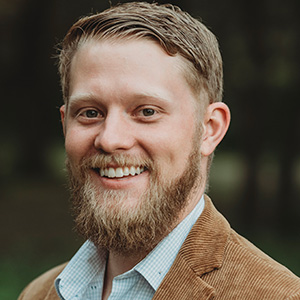
Alex Volk
Senior Engineer, ReliaQuest
 1:30 PM – 2:20 PM
1:30 PM – 2:20 PMCIAM in an Uncertain World

D. Keith Casey
API Problem Solver. Okta, Inc
In today’s uncertain world, organizations must find ways to ensure their customers can engage with their services at any time, from any device, in a secure and safe manner. That is where customer identity and access management comes in or “CIAM”. A CIAM solution must not only meet today’s security and compliance standards, but also create frictionless customer experiences to meet customers where they are and in the ways they need. Join our sessions as we discuss CIAM in more detail, how priorities have shifted this year and what CIAM maturity looks like.
 1:30 PM – 2:20 PM
1:30 PM – 2:20 PMKey Challenges, Tips and Findings on Effective Risk Management Programs
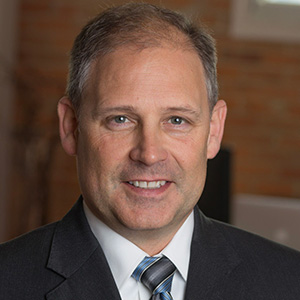
Bob Bennett
Co-Founder, NaviLogic
Risk programs, and especially third-party risk programs, are made up of a lot of components. Based on our experience, we will talk about both the challenges and solutions we see working in the marketplace today, and give attendees some helpful ideas to help improve their risk programs in practice.
 2:30 PM – 3:20 PM
2:30 PM – 3:20 PMHacktivism: Its past, present and future and what can we learn from it

Dr. Vasileios Karagiannopoulos
Reader in Cybercrime and Cybersecurity, Portsmouth University
This talk will initially define the different dimensions of hacktivism and provide an overview of its history up to the present day. It will then discuss the organizational and tactical aspects of hacktivist groups and will highlight some lessons we can learn from past examples regarding dealing with hacktivism in the future.
 2:30 PM – 3:20 PM
2:30 PM – 3:20 PMCheaper by the Dozen: Application Security on a Limited Budget

Chris Romeo
CEO, Security Journey
Everyone wants to improve application security in their organization, but what if you don’t have a million dollars to spend? How do small/medium organizations make any progress with application security? What if you could experience a catalog of application security open-source projects and receive advice on knitting them together into a program? Explore the various application security open-source projects that exist in the OWASP universe. Learn how to choose suitable projects to match your organizational needs. Training/ awareness, process/measurement, and tools are the categories available. Each project includes purpose, a plan for use, a risk rating, human resources for success, and impact. Explore how to engage your organization with a plan, experience enormous advances, and change application security forever.
 2:30 PM – 3:20 PM
2:30 PM – 3:20 PMWhy Asset Management Fails for Cybersecurity (and How to Fix it)

John Seaman
Regional Director, Axonius
Despite the fact that every major cybersecurity framework lists asset management as the most foundational element, security teams still struggle with the downstream impact of incomplete, inaccurate, and outdated asset data. Without an accurate understanding of everything in an environment, all other initiatives suffer.
But there’s good news. It doesn’t have to be this way.
Join this session to learn:
• How security frameworks like the CIS 20 and industry-specific mandates like NIST and HIPAA approach asset management requirements
• How previous approaches to solving asset management fall short
• How cybersecurity initiatives like incident response, vulnerability management, and CMDB reconciliation are impacted
• A new approach that leverages existing data to solve the asset management challenge for cybersecurity”
Healthcare & Med Device Seminar
 9:30 AM -9:40 AM
9:30 AM -9:40 AMWelcome

Mary Diner
Security Director, Optum Technology

Judy Hatchett
CISO, Surescripts
 9:40 AM – 10:10AM
9:40 AM – 10:10AMHealthcare Security Threat Landscape
This session will be a high-level summary of current security threats to medical devices and healthcare, and the efforts in place to address the risks. The end result will be a general understanding of the situation, terminology and players.

Bill Aerts
Executive Director,Archimedes Center for Healthcare and Device Security
 10:10 AM – 10:40AM
10:10 AM – 10:40AMWhat it Takes to Start a Medical Device Security Program
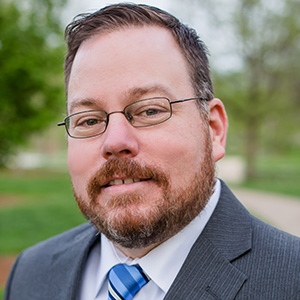
Benjamin Stock
Director of Healthcare Product Management, Ordr
The healthcare industry is continuously on the bleeding edge of innovation, deploying connected medical devices that significantly improve the quality and delivery of care. With nearly 15 connected devices per bed, the need for visibility and security of these devices is more critical than ever. But, while healthcare technology management (HTM), cybersecurity, and information technology teams share a common objective, there are still barriers to building a successful medical device security program. Join Ben Stock, Director of Healthcare Product Development at Ordr, to discuss ways to build a successful medical device security program and getting HTM, IT, and cybersecurity to work together.
 10:40 AM – 11:10AM
10:40 AM – 11:10AMWhy Does Cybersecurity Asset Management Matter for Healthcare?
Join this session to learn more about the emerging area of cybersecurity asset management, why all major security frameworks consider asset management to be foundational, and how healthcare organizations can use data from the tools already in place to solve asset management for cybersecurity.

John Seaman
Regional Director, Axonius
 11:10 AM – 11:40AM
11:10 AM – 11:40AMMayo Clinic Cybersecurity Resilience Program
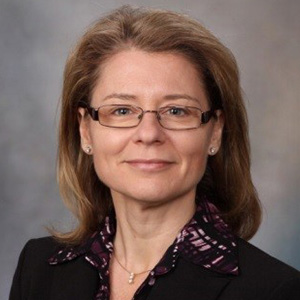
Debra Bruemmer
Senior Manager, Mayo Clinic

Sarah Jopp
Principal Information Security Analyst, Mayo Clinic
Mayo Clinic will share its journey to develop and implement a proactive, ongoing asset “certification/validation” process spanning the life-cycle of an asset. The talk will focus on one foundational asset, Windows servers, and key deliverables: secure baseline requirements, certification program, asset drift, and risk measurement. The program measures cybersecurity risk empirically at the asset level, which is consolidated to a fleet view.
 12:45 PM – 1:15 PM
12:45 PM – 1:15 PMWrangling Ransomware Worry With Words

Judd Larson
Principal Technologist, Global Quality – Product Security Office, Medtronic
Ransomware has been frighteningly pervasive in the news over the past months. Through the lens of medical device security, we’ll scope out what ransomware is, box in legitimate fears, and drive out uncertainty and doubt.
 1:15 PM – 1:45PM
1:15 PM – 1:45PMLegal Aspects of Incident Response
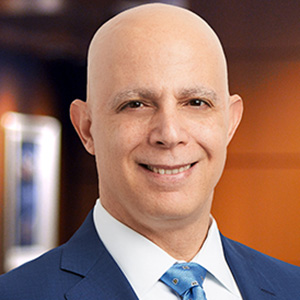
Eran Kahana
Attorney, Maslon
Ransomware is but one type of “incident.” Now, incidents are defined in various ways and contractual provisions can (and typically do) add a layer of complexity and urgency to getting it done right. To that end, it is necessary to begin by referencing the incident response plan and assembling the response team, which includes the company’s legal counsel. This presentation will highlight the critical legal aspects relative to an incident response and is aimed to assist in how to properly leverage legal counsel’s assistance.
 1:45 PM – 2:15PM
1:45 PM – 2:15PMSecuring the Patient Journey – Lessons from the trenches

Sumit Sehgal
Strategic Product Mktg Director, Armis
Learn practical examples of how to leverage information security data to enable improvements to clinical risk and patient safety. Extending beyond the medical device security, we will showcase insights that require a holistic approach to what security in the next 2 to 3 years will look like related to healthcare device ecosystems.
 2:30 PM – 3:00PM
2:30 PM – 3:00PMThe Human Element
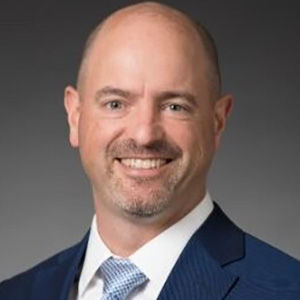
Keith Ibarguen
Chief Product Officer , Cofense
Healthcare and medical device companies are some of the most targeted organizations in the world. Humans, when appropriately involved in your phishing defense, can be very effective sensors against these attacks. Through empowering people, we can create a resilience not achieved by technology alone. The power of this collective is achieved through a comprehensive, positive, human-focused program looking at the issues from end to end. Join us to discuss how you can build a better employee: one who can better identify, report, mitigate and remediate zero-day attacks.
 3:00 PM – 3:30PM
3:00 PM – 3:30PMHealthcare and the Cloud, what to be prepared for when moving or consuming applications to the cloud

Richard Scott
Chief Security Architect , Optum Technology
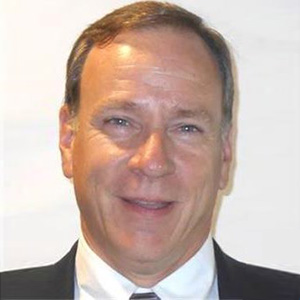
David Mott
Senior Principal Engineer TLCP, Optum Technology
To be able to successfully utilize public cloud platforms with healthcare applications one has to address a number of foundations items in which we transforms the way we look at risk. Security, Risk and Compliance now spans a variety of stakeholders between the Cloud Service provider, Technology teams and the Healthcare Provider. Understanding the basic platform consumption models, your responsibilities and expectations are critical for safe and secure use of public cloud. In this session, we cover the basic tenets of using public cloud hosted healthcare solutions differentiating between IaaS, PaaS, SaaS consumption patterns and what you should be aware of.
 3:30PM – 4:30PM
3:30PM – 4:30PMBreaking into Medical Device Cybersecurity: Career Transition
The global demand for Cybersecurity professionals is high, and the need for experts in cyber for medical devices is at the top of that list. This panel will discuss options and opportunities for employees from a wide variety of backgrounds to transition or prepare for a career in med device cybersecurity. The conversation will include perspectives from those who have made the transition as well as hiring managers.
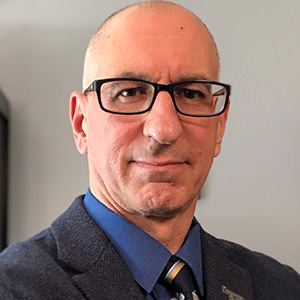
Daniel Mooradian
Director of Graduate Studies for the MS in Medical Device Innovation Program, Technological Leadership Institute – University of Minnesota
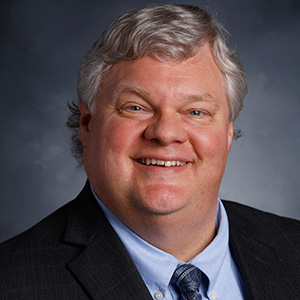
Mike Johnson
Director of Graduate Studies and Renier Chair, Technological Leadership Institute
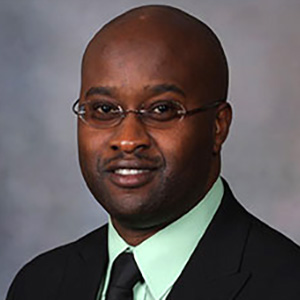
Andrew Bomett
VP & CISO, Boston Scientific
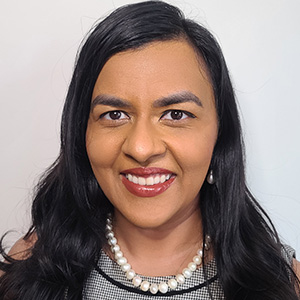
Shruti Iyers
Principal Innovation Architect, Oracle

Judd Larson
Principal Technologist, Global Quality – Product Security Office, Medtronic
IoT/IIoT/ICS/SCADA Collaboration
 1:00PM – 1:30PM
1:00PM – 1:30PM“Keeping together is progress. Working together is success.” – Henry Ford
The Nation’s critical infrastructure consists of industrial control systems delivering today’s essential electricity, oil, gas, agriculture, and transportation. Sophisticated threats against an expanded attack surface require government and executive teams to address risk management strategies, realign operations safety and engineering accountability, and deliver comprehensive business and cyber resiliency solutions from top to bottom.
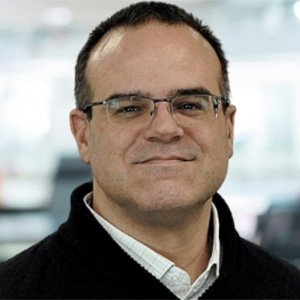
Paul Veeneman
President & COO, Beryllium Infosec Collaborative
 1:25PM – 2:00PM
1:25PM – 2:00PMStandards and Risks; Cybercrime and the Internet of Things
The merger of the physical and virtual worlds is underway. A confluence of technologies has made this possible under the rubric known as the Internet of Things (IoT). This merger brings sensors and devices in the billions to cyberspace, already dwarfing the Internet of People. A vast increase in hackable devices will create profound vulnerabilities in the physical world, creating new opportunities for cybercrime and a pressing need for standards and action.

Sean Costigan
Professor, George C. Marshall European Center for Security Studies
 2:00PM – 2:30PM
2:00PM – 2:30PMA Private Sector Perspective on the OT Focused Executive Orders and Policies
What worked well, what didn’t work; and lessons learned.

Robert Lee
CEO, Dragos
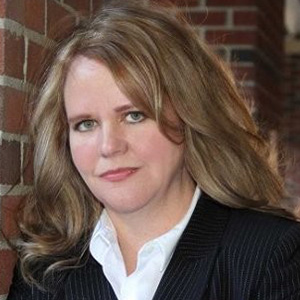
Karen Andersen
Principal Consultant, IAM Advisory | Cybersecurity | eDiscovery/ESI Consultant
 2:45PM – 3:15PM
2:45PM – 3:15PMOT…Not just another form of IT Security
Control system cyber security is composed of networks (IT and OT) and field devices (engineering). Cyber security is network-focused with technologies, training, and cyber logging available under the purview of the CISO. Control system devices have no cyber security, authentication, cyber logging, training for control system engineers, and engineering management is not involved. There have been almost 12 million actual control system cyber incidents that have killed more than 1,500 with more than $90Billion in direct damage. How can we reconcile the technical and cultural gaps between networking and engineering?

Joe Weiss
Managing Partner , Applied Control Solutions, LLC
 3:15PM – 3:45PM
3:15PM – 3:45PMVulnerability Risk Assessments Guidance on IOT Controls
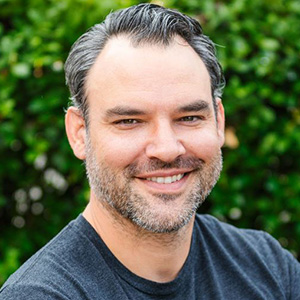
Ted Gutierrez
CEO, SecurityGate.io
In an era of increasing vulnerability depth in IOT ecosystems, risk stakeholders and technical teams are challenged with developing systems and capabilities to identify and manage IoT device security. This discussion will focus on ways to incorporate training, standards, and tools from a business-centric perspective. Attendees will walk away actionable guidance they can implement in their business within 30-60d.
 3:45PM – 4:15PM
3:45PM – 4:15PMArchitecting a Successful Digital Transformation Solution

David Schultz
President, G5 Consulting & Engineering Services
In order to avoid what is commonly known as pilot purgatory, companies must use an architecture that supports Industry 4.0 concepts. This presentation will cover four sections. The first will define the objectives of a digital transformation strategy. The second will provide an overview of business and manufacturing data and how it is organized. The third will introduce the concept of a unified namespace and how business and manufacturing systems will interact with it. The final section will present the steps to a successful digital transformation.
 4:15PM – 4:45PM
4:15PM – 4:45PMHere’s Where We Are, Don’t over Rotate
The role of cyber resilience is to avoid production disruption due to a cyber event and clearly, we are failing. Through this talk we will explore a few cases where negative bias has improperly influenced risk calculations and led to disruptions and leave you with techniques to create a whole enterprise risk strategy.
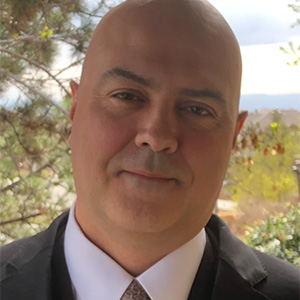
Jamison Utter
Sr Director Product and Solution Evangelism, Ordr
Small Business Seminar
 1:00 PM – 1:10 PM
1:00 PM – 1:10 PMOpening Welcome: “The New Normal”

Lyle Wright
MM, EDFP Associate State Director, SBDC
The deeply interconnected nature of today’s world means that cyber security can have a direct impact on a small businesses bottom line. Developing a good cyber security culture in your business can help protect profits and enable your organization to thrive in today’s modern business environment. The sessions today will detail tactics, tools and approaches you can adopt to ensure your success.
 1:10 PM – 1:25 PM
1:10 PM – 1:25 PMResources for Even the Smallest Businesses
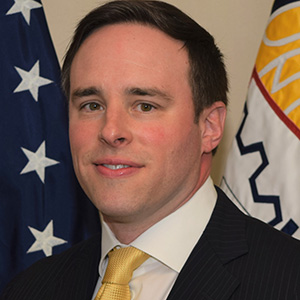
Brian McDonald
District Director, SBA
Small business owners have embraced digital tools to manage and grow their businesses, but those tools potentially open them to increasingly sophisticated cyber-attacks. We’ll introduce SBA resource partners and free resources that can be used to start on a path to protecting your organization.
 1:25 PM – 2:15 PM
1:25 PM – 2:15 PMPractical Ways to Manage Risk as a Small Business
Moderator:

Melinda Rambel Stone
VP, CISO, Bremer Bank
Panelists:
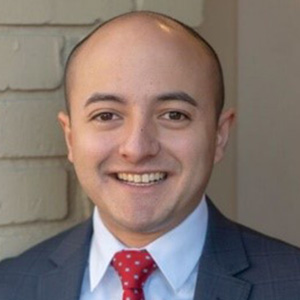
Joseph Chow
Specialized Business Solutions Center Director, Bremer Bank

Laura Burr
Deposit Administration Manager, VP, Bremer Bank

Meredith Winegar
Mortgage and Trust Operations Director, Bremer Bank
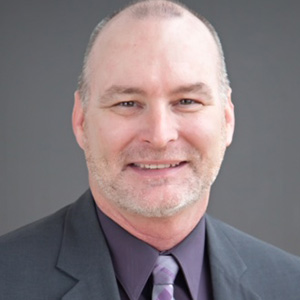
Robert Worden
Insurance & Sales Education, Bremer Insurance
Small businesses are an attractive target for cybercriminals. Having a financial partner that can help you to identify, understand, and manage these cyber risks is critical. Hear from a Bremer Bank panel with backgrounds in cyber security, operations, fraud, and insurance as they share practical information and resources with real customer stories. This session will help to increase your knowledge of cyber security threats and what small businesses should be concerned about when it comes to banking and cyber security.
 2:15 PM – 2:45 PM
2:15 PM – 2:45 PMExpanding Government Cybersecurity Requirements for Suppliers
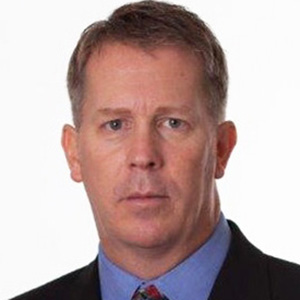
Scott Singer
President, CyberNINES, Ret. USN Captain
Many small businesses further down the supply chain are getting caught off guard. They are getting notification of requirements and have no idea of why or how to begin implementing them. This talk will identify how that pipeline works. DOD has released new cybersecurity requirements that are being flowed down through purchase orders to the entire Defense Industrial Base. Thinking this may not apply to your small company? Well, GSA, NASA and DHS have all announced plans to create a similar program. Today’s cybersecurity threats make this mandatory.
 3:00 -3:30 PM
3:00 -3:30 PMHow the Government is Helping Small Business Build a Defense
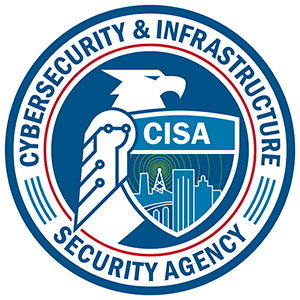
Chris Gabbard
Cybersecurity Advisor, Region 5, Cybersecurity and Infrastructure Security Agency
What is CISA, threat landscape, what can you do to help fix it – risk management, resources available before the attach happens. Managed service provider resources recently released. Patch, IOT
 3:30 -4:30 PM
3:30 -4:30 PMCybersecurity Resources for Small Businesses – SBDC Cybersecurity Task Force
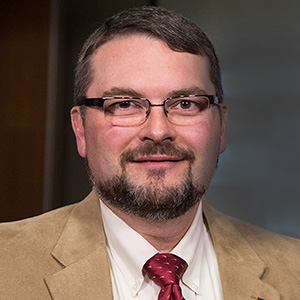
Earl Gregorich
CBA, Area Manager & Business Consultant, Greenville Area Small Business Development Centers, In partnership with Clemson University
Small businesses know the cybersecurity challenges, threats and weaknesses they face in the digital economy. What they need is a way to navigate these issues without burning through their time and money. The SBDC Cybersecurity Task Force has put together simple, non-technical tools and guidance to help entrepreneurs understand the basics of cybersecurity awareness, how to get started and how to do it all at a reasonable cost. This session will explain how you can use the no-fee services of the SBDC network to plan and launch a realistic approach to good cyber-hygiene. The session will also provide tools you can use today to help protect the value in your small business.
 4:30 -5:00 PM
4:30 -5:00 PMQ&A Session for Taking Actionable Steps
Moderator:

Andrew Tellijohn
Upsize MN
Panelists:
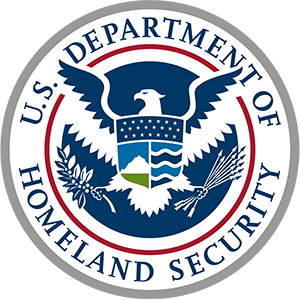
Christopher Gabbard
CISA

Earl Gregorich
Area Manager and Business Consultant at Greenville Area Small Business Development Center, SBDC

Milinda Rambel Stone
VP, CISO, Bremer Bank

Scott Singer
President, CyberNINES, Ret. USN Captain
This session will address your questions such as
• What are some easy cyber hygiene practices I can quickly put in place?
• What is the first step to take if I get a message that my system has been compromised?
• What are the signs that something may be going wrong?
• Your IT Department is not always your best line of defense
• If I have critical information that needs to be defended and how do I defend that?
General Summit – Tuesday
 7:30 AM – 8:00 AM
7:30 AM – 8:00 AMCyber Career Exploration

Rohit Tandon
Assistant Commissioner, State Chief Information Security Officer, State of Minnesota, MNIT Services
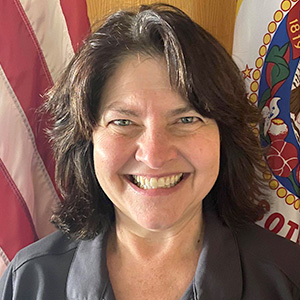
Nancy Skuta
Senior Information Security Analyst, ITS4, Threat and Vulnerability Management, MNIT Services
Deputy CISO for the State of Minnesota presents timely advice and career-shaping insights for future cyber security professionals.
 8:00 AM – 8:20 AM
8:00 AM – 8:20 AMOpening Welcome

Mike Johnson
Director of Graduate Studies and Renier Chair, Technological Leadership Institute

Eileen Manning
Co-Founder, Executive Producer, Cyber Security Summit

Allison Hubel, PhD
Director , Technological Leadership Institute at University of Minnesota
An eleven-year journey brings us to today. Eleven years ago, the University of MN, Technological Leadership Institute had the foresight to raise concerns that cyber security was to become a household concern, and the Summit was born.
 8:00 AM – 8:35 AM
8:00 AM – 8:35 AMThe Power and Peril of Connection

Jennifer Czaplewski
Senior Director, Cyber Security, Target

Wade Van Guilder
Sr. Manager for Solutions and Architectures for World Wide Technology (WWT), State & Local Government and Education (SLED), World Wide Technology
Connections are powerful. Most of us realized the value of our interpersonal connections in 2020 as the pandemic changed the way we interact with colleagues, friends and family. The proliferation of mobile devices and sensors in everyday items has created the most powerful network of interconnected devices imaginable. But with great power comes great responsibility. Protecting the estimated 21.5 billion devices in use today requires security professionals to adapt and learn faster than ever before.
 8:35 AM – 9:00 AM
8:35 AM – 9:00 AMSolving the puzzle: Collaboration, Imagination and Cybersecurity
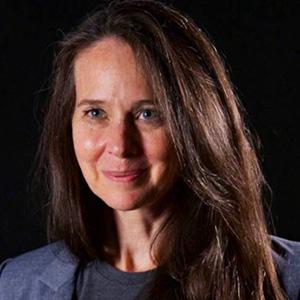
Jen Easterly
Director, Cybersecurity and Infrastructure Security Agency (CISA)
Jen Easterly serves as the Director of the Cybersecurity and Infrastructure Security Agency (CISA), where she’s leading the national effort to understand, manage and mitigate risk to our physical and cyber infrastructure. Under Director Easterly’s leadership, CISA is working to change the thinking on cybersecurity through imagination and to increase our national cyber preparedness through collaboration with the public and private sectors. She’ll provide insight into the benefits of a truly unified effort to secure the nation from cyber threats and how we can act now, together, to realize the greatest impact. Key themes will include how promoting better collaboration and strengthening cooperation between public and private sectors are the most critical pieces to solving the cybersecurity puzzle.
 9:00 AM – 9:30 AM
9:00 AM – 9:30 AMStaying out of Trouble: DOJ’s Former Top Cyber Prosecutor On Staying Safe

Brian Levine
Managing Director, Cybersecurity & Data Privacy, EY
Now a cybersecurity leader at EY, Brian Levine served for the last 20 years as a cybercrime prosecutor with the U.S. Department of Justice, National Coordinator for all 300 federal cybercrime prosecutors, an Assistant Attorney General with the New York Attorney General’s Office, and a civil litigator. Brian will address how those of us in security can stay out of legal and regulatory trouble, including discussing such topics as breach communications, incident reports, informed consent, ransom payments, hack back, bug bounty programs, and more.
 9:30 AM – 10:15 AM
9:30 AM – 10:15 AMRansomware Panel
Moderator:

Tom Sheffield
Senior Director Technology, Target
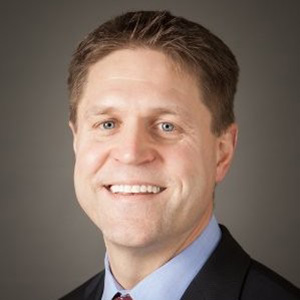
Dan Hanson
Senior Vice President Management Liability and Client Experience, Marsh & McLennan Agency

Yan Kravchenko
Information Security Director, Hennepin Healthcare

Peter Martinson
Director of Incident Response , Blue Team Alpha

Aaron McKee Campbell
FBI Computer Scientist, FBI
Ransomware, to pay or not to pay? Hear from experts from the FBI, Incident Response, Insurance Industry and Healthcare during this dialogue on issues surrounding response to a ransomware attack.
 10:45 AM – 11:15 AM
10:45 AM – 11:15 AMFive hard questions for a cyber insurance broker.
Panelists:
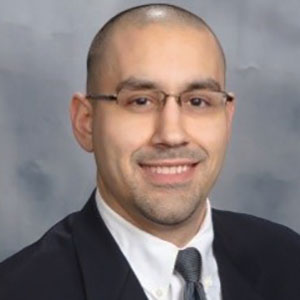
Mario Paez
Director, Cyber & Technology E&O, Marsh & McLennan Agency LLC
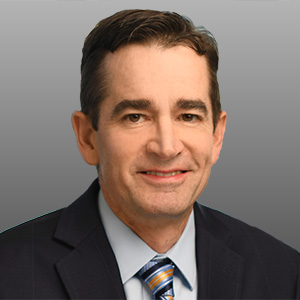
Phil Schenkenberg
Partner, Litigation & Cyber Security , Taft Law
In this fireside chat, a top cyber insurance broker will answer 5 hard-hitting questions about coverage and underwriting trends, and best practices for companies to better navigate the buying and claims process.
 11:15 AM – 11:45 AM
11:15 AM – 11:45 AMDefragging Our Cyber Strategy

Brigadier General Stefanie Horvath
Mobilization Assistant to the Director of Operations; Executive Director Enterprise Services, U.S. Cyber Command, MNIT
We must improve our system performance to defend American interests in the cyber domain. Come hear Cyber Command’s BG Horvath combine military strategic examples and cybersecurity analysis to visualize a stronger defensive cyber strategy with a focus on how to lead with collaboration while solving hard security problems our nation faces.
 1:00 PM – 2:00 PM
1:00 PM – 2:00 PMHuman Factors in Cybersecurity: Threats from Within
Moderator

Sean Costigan
Professor, George C. Marshall European Center for Security Studies
Panelists
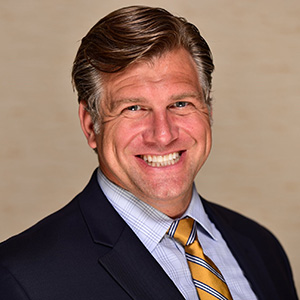
Andrew Borene
Civil Liberties & Privacy Officer, National Counterintelligence and Security Center (NCSC), Office of the Director of National Intelligence
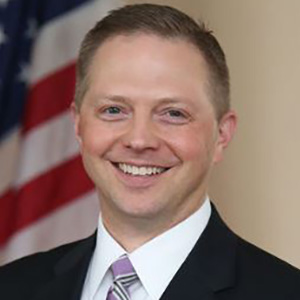
W. Anders Folk
Acting United States Attorney , U.S. Department of Justice
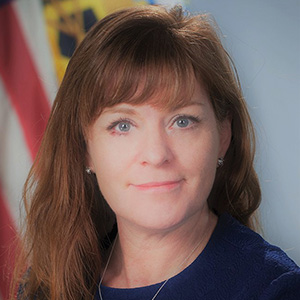
Rebecca Morgan
Deputy Assistant Director, Insider Threat; Deputy Director, National Insider Threat Task Force , National Intelligence and Security Center
Whether as a malicious act or inadvertent actions by careless employees, the greatest threat to an organization’s information system is often on the inside. Subject matter experts from the National Counterintelligence and Security Center (NCSC) and the Department of Justice will examine the role of insider threat mitigation in cybersecurity. Join our panelists for a discussion on the threats and vulnerabilities of insiders operating in the cyber realm and the role of insider risk programs in deterring, detecting, and mitigating risk while protecting the privacy and civil liberties of the workforce. Discussion will cover the current risk environment, including heightened vulnerabilities created by the Global Pandemic; potential threats posed by trusted insiders and the adversaries and competitors who seek to co-opt or exploit them; best practices and resources to mitigate risk; and a live Q&A with audience.
 2:00 PM – 2:30 PM
2:00 PM – 2:30 PMShift Left: Easier said than done

Larry Maccherone
DevSecOpps Transformation, Contrast Security
Shift Left. A phrase that is easy to say, but a strategy that many organizations struggle to effectively implement. This talk, presented by industry expert Larry Maccherone, will discuss the top 5 reasons that “shift left” is hard and the best ways to overcome the challenges.
 3:00 PM – 3:30 PM
3:00 PM – 3:30 PMSecuring the Development & Supply Chain of Open Source Software (OSS)

Derek Weeks
Senior Vice President, The Linux Foundation
Open Source Software (OSS) is being distributed and consumed today on a massive scale through software supply chains. While OSS delivers tremendous benefit in terms of accelerated development and innovation, it is an increasing common target of cyber adversaries. Join Derek for a discussion of how OSS is developed, distributed, maintained, and attacked. Derek will reveal insights on how open source projects with 1.5x more frequent releases and 530x faster open source dependencies upgrades harness this speed to dramatically improve security within their code. He will also share insights on how high performance enterprise software development teams simultaneously boost productivity and security – achieving 15x faster deployments and 26x faster remediation of application security vulnerabilities. Derek then will show how you can apply these exemplary practices to stay a step (or more) ahead of your adversaries using by sharing a set of best practices and attack countermeasures.
 3:30 PM – 4:00 PM
3:30 PM – 4:00 PMFuture Proof Security for a Connected World – Cybereason
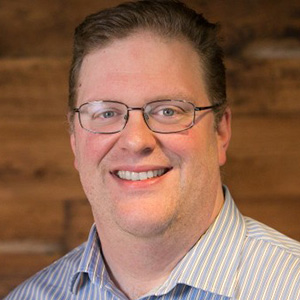
Sam Curry
CSO, Cybereason
2020 was a year of learning, with surges in ransomware, nation states infecting supply chains from Solar Winds to Microsoft, and radical new work models that might presage a “new normal.” The biggest problem in security, though, continues to be a lack of alignment between security functions and their core businesses or organizational missions. In this session, we’ll examine how to automate the automatable, what to do to secure the apparently insecurable, and how to future-proof security programs. Preparing in peacetime for the crisis is important, and getting the hygiene right matters, but that’s where the game starts. The advanced game tunes the SOC for efficiency and scale and focuses on application of Human, carbon-based intelligence as ruthlessly as possible to make life miserable for attackers. We’ll make some predictions for the future, but the choice for attendees is critical: will they choose to build future-proof programs or remain with the strategies of the last cyber generation?
 4:00 PM – 4:40 PM
4:00 PM – 4:40 PMYou CAN stop stupid
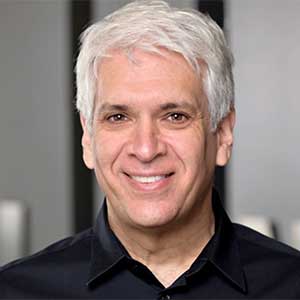
Ira Winkler
CISO, Skyline Technology Solutions
“The User Problem” is the most costly problem to most security programs. The perceived solution is to create “The Human Firewall” through improved awareness. While awareness is important, it is a tactic and not a comprehensive strategy to address the problem, Using strategies from accounting, counterterrorism, safety sciences, etc., which have all been addressing human issues, Ira provides a comprehensive and workable strategy to apply to cybersecurity to significantly reduce losses from user actions.
 4:40 PM – 5:10 PM
4:40 PM – 5:10 PMClosing Keynote: The Lawful Access Challenge
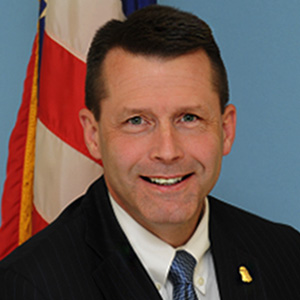
Darrin E. Jones
Executive Assistant Director, FBI
Many federal, state, local, and tribal law enforcement agencies are facing challenges due to the phenomenon sometimes referred to as “warrant-proof” encryption. Commercial service providers, device manufacturers, and application developers are increasingly deploying and aggressively marketing products and services with a form of strong encryption that can only be decrypted or accessed by the end users or device owners. Because of warrant-proof encryption, the government often cannot obtain the electronic evidence necessary to investigate and prosecute threats to public and national safety, even with a warrant or court order. End-to-end encryption and other forms of warrant-proof encryption create, in effect, lawless spaces that criminals, terrorists, and other bad actors can exploit.
General Summit – Wednesday
 8:00 AM – 8:30 AM
8:00 AM – 8:30 AMVisionary Leadership Awards
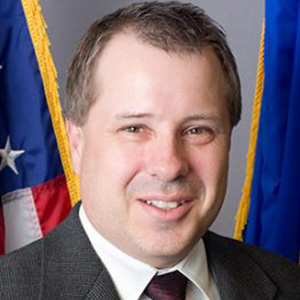
Christopher Buse
SVP, Chief Information Security Officer, Old Republic
Start the day inspired by the accomplishments of the 2021 honorees. The Morries™ Visionary Leadership Awards recognize innovative practitioners from across the cybersecurity ecosystem working to develop and foster strategies that protect critical systems and data. Join us as we honor the exemplary leadership of our colleagues in the field, including security awareness leaders, audit leaders, academic leaders, governance champions and more.
 8:30 AM – 9:15 AM
8:30 AM – 9:15 AMThe Psychology behind Security Leadership: Making Strategic Impacts

Shayla Treadwell
Executive Director, Cybersecurity Center of Excellence Governance, Risk & Compliance, ECS
With the evolution of technology, cyber threats continue to impact people and organizations daily even with enhanced technical controls in place. Because of this, there is a heightened importance on the direction that information security executives provide organizations to ensure timely and proactive remediation. However, research indicates that the leadership methodologies deployed by security leaders are not always the same as other leadership roles within organizations. This presentation explores the methodologies behind the roles and decisions of these executives and how they impact the strategic futures of information security.
 9:15 AM – 10:00 AM
9:15 AM – 10:00 AMHow to leverage the power of ISAC’s

Christopher Buse
SVP, Chief Information Security Officer, Old Republic

Carlos Kizzee
Vice President, Stakeholder Engagement, MS-ISAC, Center for Internet Security

Ryan Miller
Director of Cyber Threat & Fraud Intelligence , Target
Information Sharing & Analysis Centers (ISACs) have been an integral part of the nation’s cyber defenses since the late 1990’s. ISACs operate within many of the nation’s critical infrastructures, bringing together practitioners and operators to share information, intelligence, collection and analysis on cyber and physical threats, as well as develop best practices for mitigation. ISACs are designed to be active, ongoing communities of trust that cut through the noise and complexity of cyber issues and help their members focus on things that really matter to their sector and organizations. “Sharing and Analysis” can be misleading – however ISACs can be powerful resources leading to better engagement and collaborative environments – delivering higher confidence public sector services. The public sector touches all aspects of critical infrastructures, and in this session we’ll look at the wide range of activities, partnerships, and business models seen across the ISAC community. Representatives from the Multi-State ISAC (MS-ISAC), and Retail & Hospitality ISAC (RH-ISAC) will provide detailed insight and explore examples of actionable information sharing, products and services that are available, and success stories of cybersecurity improvements. ISACs require active engagement to maximize value, so we’ll also focus on how to make the best use of being a member of an ISAC.
 10:20 AM – 10:50 AM
10:20 AM – 10:50 AMForging the Future

Gary Sorrentino
Global Deputy CIO, Zoom Video Communications , Zoom
We’ve demonstrated that we can be incredibly productive in multiple constructs – together – and apart; so, how do we make sure that we get the most of both? We have an opportunity to reimagine how we use the space we work in and optimize our workforce and that’s an exciting place to be. In this presentation, we will discuss how to prepare your company for as offices reopen to be successful in this new work from anywhere model.
 10:50 AM – 11:45 AM
10:50 AM – 11:45 AMSoftware Supply Chain Security
Moderator:
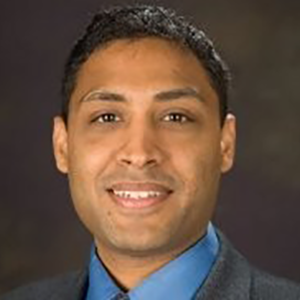
Sailesh Gadia
Partner, KPMG
Panelists:
Once considered an esoteric domain of cybersecurity, Software Supply Chain security is now a Board Room conversation. Action must be taken to protect and safeguard us. The conversation will cover the current policy landscape, which includes actions from all branches of government, as well as how thinking on risk has evolved over the past several years. Our panel will touch on the notion of shared risk and how to think through responsibilities for government, the private sector, software vendors and the consumer.
 1:00 PM – 1:30 PM
1:00 PM – 1:30 PMThe Attack of the Cyber Supply Chain
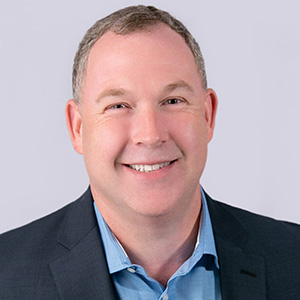
Jon Ford
Managing Director, Mandiant
SolarWinds defined the attack of the cyber supply chain. One of the most extensive, stealthy attacks ever discovered, organizations were attacked through trojanized updates to legitimate monitoring and management software. SolarWinds provides a discussion opportunity of the infinite horizon, the importance of attribution, and improvements to information sharing.
 1:30 PM – 2:00 PM
1:30 PM – 2:00 PMArtificial Intelligence in Cybersecurity Present and Future Role
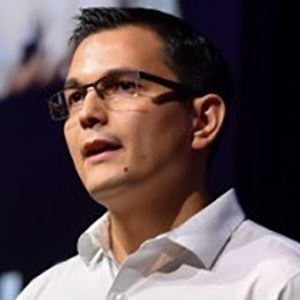
Tony Lee
VP, Global Services Technical Operations, Blackberry
Have you ever wondered about Artificial Intelligence (AI) in Cybersecurity? Maybe you are curious to know how it is currently being applied or how it might be applied in the future? Better yet, how AI relates to the current threat landscape and even your environment. If so, join us! Where we will break it down using real-world examples. This is a zero to hero session so you don’t need a PhD in math or data science to enjoy the topic and learn something new.
 2:00 PM – 2:30 PM
2:00 PM – 2:30 PMThreat Adaptation and the Commercialization of Cybercrime
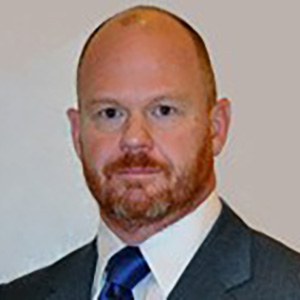
Chris Mark
National Practice Director- Payment Security, Fraud, and IAM
Cybercriminals, like criminals in many other domains, show unique capabilities to adapt to controls emplaced to thwart their criminal efforts. Most recently, the world has seen an adaptation from the ‘lone wolf’ attacker to more structured, specialized groups focused on specific areas of cybercrime. Consider Ransomware today. There are groups that specialize in targeting and compromising an organization and other groups who specialize in receiving, and laundering the money. These tactics are not new and reflect threat adaptation and security cycle theory. Learn about some of the more advanced attacks and concepts that underpin the commercialization of cybercrime. Examples will be used from BEC, and Ransomware, among others.
 3:00 PM – 3:30 PM
3:00 PM – 3:30 PMWork Your Way & Be Secure

Tris Lingen
VP, Enterprise Chief Information Security Officer, 3M
Hear from 3M’s CISO Tris Lingen as she reviews how the past year has changed how we work. It taught us that we can and need to reimagine how our organizations operate. We learned that a more flexible way of working is essential for continued growth. Our workforce security considerations and cybersecurity capabilities are aligned to support working differently.
 3:30 PM – 4:00 PM
3:30 PM – 4:00 PMCyber Defense Operations in an Interconnected World
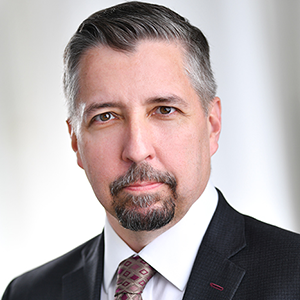
Tim Crothers
SVP, Chief Security Officer, FireEye
Tim is a seasoned security leader with over 20 years of experience building and running cyber security programs, large and complex incident response and breach investigations, and threat and vulnerability assessments. He has deep experience in cyber-threat intelligence, reverse engineering, computer forensics, intrusion detection, breach prevention, and applying six sigma/lean process to security. He is author/co-author of 17 books to date as well as regular training and speaking engagements at information security conferences. Currently Tim is Chief Security Officer for Mandiant. There he and his team defend Mandiant from some of the most sophisticated adversaries in the world.
 4:00 PM – 4:30 PM
4:00 PM – 4:30 PMAdversary Trends: What You Need to Know

Jason Steer
Principal Security Strategist, Recorded Future
Jason Steer is a Principal Security Strategist at Recorded Future, where he’s responsible for employee education & awareness, monitoring our key technology partners and a member of the CSIRT. He has previously held positions at a number of successful security companies over the past 15 years, including IronPort, Veracode, and FireEye. Jason’s expert commentary has been featured in BBC, CNN, and Al Jazeera, and he has worked with both the EU and UK Governments on cyber security strategy. Jason holds a Degree in Management Information Systems.
 4:30 PM – 4:45 PM
4:30 PM – 4:45 PMWrap Up and Practical Takeaways

Jennifer Czaplewski
Senior Director, Cyber Security, Target

Wade Van Guilder
Sr. Manager for Solutions and Architectures for World Wide Technology (WWT), State & Local Government and Education (SLED), World Wide Technology
Review Summit Highlights and takeaways and Call to Action to solidify action items to take back to your organization.
